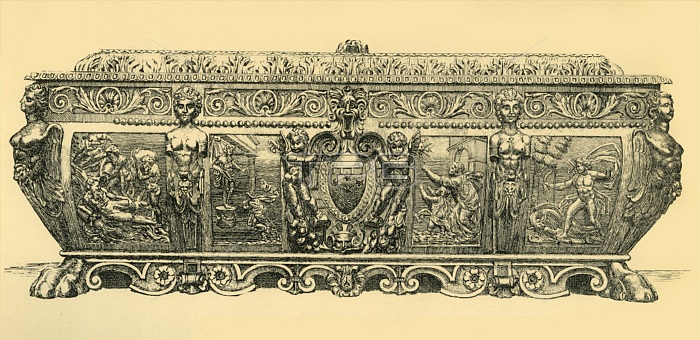
Walnut cassone, 1570, (1881). Etching of a carved wooden cassone or chest, one of a pair made in Rome in the late 16th century. The cassoni were probably made to celebrate a marriage linking two wealthy families, whose arms are prominently displayed in the centre flanked by naked putti. The marriage may have been that of Paolo Lancelloti and Giulia Delfini in Rome, in 1570. Across the front are four relief scenes from Greek myth: Apollo shoots dead the dragon or serpent, known as the Python, which guarded the oracular shrine at Delphi; the nymph Clymene [?], with Phaeton her son by Helios the sun god; Phaeton as a youth asking Helios for the use of his father's celestial chariot; a reclining river god, probably representing Eridanus, into whose waters Phaeton crashed. The chest is set on lion feet, with acanthus leaf decoration. From "The South Kensington Museum", a book of engraved illustrations, with descriptions, of the works of art in the collection of the Victoria & Albert Museum in London (formerly known as the South Kensington Museum). [Sampson Low, Marston, Searle and Rivington, London, 1881]
| px | px | dpi | = | cm | x | cm | = | MB |
Details
Creative#:
TOP25072335
Source:
達志影像
Authorization Type:
RM
Release Information:
須由TPG 完整授權
Model Release:
No
Property Release:
No
Right to Privacy:
No
Same folder images:

 Loading
Loading